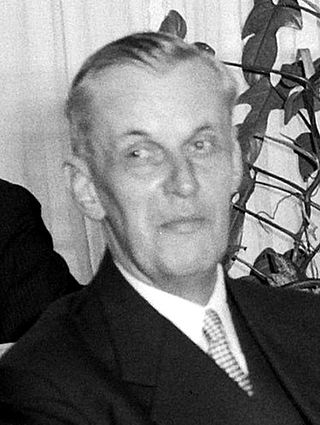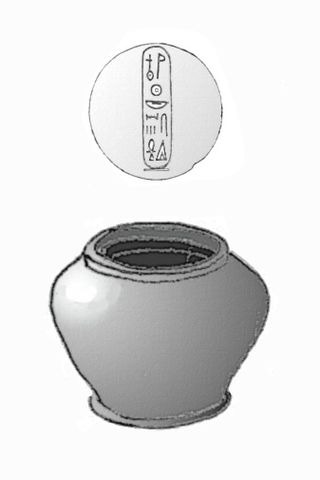
Leiden University is a public research university in Leiden, Netherlands. It was founded as a Protestant university in 1575 by William, Prince of Orange as the first university in the Netherlands.

Leiden University Libraries is a library founded in 1575 in Leiden, Netherlands. It is regarded as a significant place in the development of European culture: it is a part of a small number of cultural centres that gave direction to the development and spread of knowledge during the Enlightenment. This was due particularly to the simultaneous presence of a unique collection of exceptional sources and scholars. Holdings include approximately 5,200,000 volumes, 1,000,000 e-books, 70,000 e-journals, 2,000 current paper journals, 60,000 Oriental and Western manuscripts, 500,000 letters, 100,000 maps, 100,000 prints, 12,000 drawings, 300,000 photographs and 3,000 cuneiform tablets. The library manages the largest collections worldwide on Indonesia and the Caribbean. Furthermore, Leiden University Libraries is the only heritage organization in The Netherlands with five registrations of documents in UNESCO's international Memory of the World Register.

Aşıklı Höyük is a settlement mound located nearly 1 kilometre (0.62 mi) south of Kızılkaya village on the bank of the Melendiz brook, and 25 km (16 mi) southeast of Aksaray, Turkey. Aşıklı Höyük is located in an area covered by the volcanic tuff of central Cappadocia, in Aksaray Province. The archaeological site of Aşıklı Höyük was first settled in the Pre-Pottery Neolithic period, around 8,200 BC.

Robert Jacobus Forbes or Robert James Forbes was a Dutch chemist and historian of science and professor in the history of applied science and technology at the University of Amsterdam.
The Biografisch Portaal is an initiative based at the Huygens Institute for Dutch History in Amsterdam, with the aim of making biographical texts of the Netherlands more accessible.

KIT, formerly the Royal Tropical Institute, is an applied knowledge institute located in Amsterdam, Netherlands. It is an independent centre of expertise, education, intercultural cooperation and hospitality dedicated to sustainable development.

The Korps Commandotroepen (KCT) is the elite special forces unit of the Royal Netherlands Army. The KCT traces its origins to the Second World War with the founding of No. 2 (Dutch) Troop, and the founding of the Korps Speciale Troepen during the Indonesian War of Independence. At present, the unit is tasked with conducting the full spectrum of special operations, its principal tasks being direct action, special reconnaissance, military assistance and counter-terrorism.

Remieg A. M. Aerts is a Dutch historian and Professor of Dutch History at University of Amsterdam.

Nebsenre was an Egyptian pharaoh of the 14th Dynasty of Egypt during the Second Intermediate Period. Nebsenre reigned for a least five months over the Eastern and possibly Western Nile Delta, some time during the first half of the 17th century BCE. As such Nebsenre was a contemporary of the Memphis based 13th Dynasty.
Emericus Joannes van Donzel was a Dutch historian of the Middle East, with particular interests in Ethiopia and the interaction between the Islamic world and Christianity.
Margaret Cool Root is Professor of Near Eastern Art and Archaeology at the University of Michigan. She is an expert on the Achaemenid empire of ancient Persia and its interactions with Greece, and has published widely on Near Eastern material culture.

The Royal Netherlands Institute in Rome, founded in 1904 as Nederlands Historisch Instituut te Rome, is a Dutch centre for studies in the Humanities based in Rome. It was awarded the title "Royal" by Queen Beatrix in 2004. The Institute was initially one of several Roman Historical Institutes set up to identify and publish Roman archival documents of national interest, with Gisbert Brom as its first director. Its remit has since been extended to include the study of archaeology, art history, literature, architecture and geography.
Lagaba was a city in the historical region of southern Mesopotamia. It is the place of origin of many illicitly excavated clay tablets, all in Old Babylonian. More than 400 tablets are known to have originated there. Tablets from Lagaba are kept in various collections around the world, among which

François "Frank" Scholten was a Dutch photographer and author.
Grant Frame is a Canadian-American Assyriologist, Professor Emeritus of the University of Pennsylvania, and Curator Emeritus of the Babylonian Section of the University of Pennsylvania Museum of Archaeology and Anthropology. He is an expert on Akkadian language and literature and on the history and culture of ancient Mesopotamia in the first millennium BCE, in particular the Neo-Assyrian and Neo-Babylonian periods. Since 2008, he has served as Director and Editor-in-Chief of The Royal Inscriptions of the Neo-Assyrian Period (RINAP), an international research project funded by the U.S. government's National Endowment for the Humanities and other granting agencies, to translate the royal inscriptions of the rulers of Assyria from 744 to 609 BC. The RINAP project marks the continuation of the Royal Inscriptions of Mesopotamia (RIM) project, which Frame's teacher and mentor, Albert Kirk Grayson, founded at the University of Toronto in 1978 and led until his retirement with support from the Social Sciences and Humanities Research Council of Canada.
Frits Herman ('Kees') van Naerssen was a scholar of Javanese epigraphy and an early figure in Asian studies in post-war Australia.

Arie Abraham (Ary) Kampman was a Dutch scholar of Ancient Near Eastern studies, an initiator of scholarly societies and journals, and a secondary school teacher. Kampman obtained his Dutch PhD degree with professor Frans de Liagre Böhl on the 1945 thesis De historische beteekenis der Hethietische vestingbouwkunde. In 1939 he was a founder of the Nederlands Archaeologisch Instituut voor het Nabije Oosten, the predecessor of the present The Netherlands Institute for the Near East.

Franz "Frans" Marius Theodor de Liagre Böhl was a Dutch professor of Assyriology and Hebrew.
The De Liagre Böhl Collection of Cuneiform Inscriptions or Böhl Collection is a collection of clay tablets and other objects inscribed with cuneiform texts in Leiden, the Netherlands.















